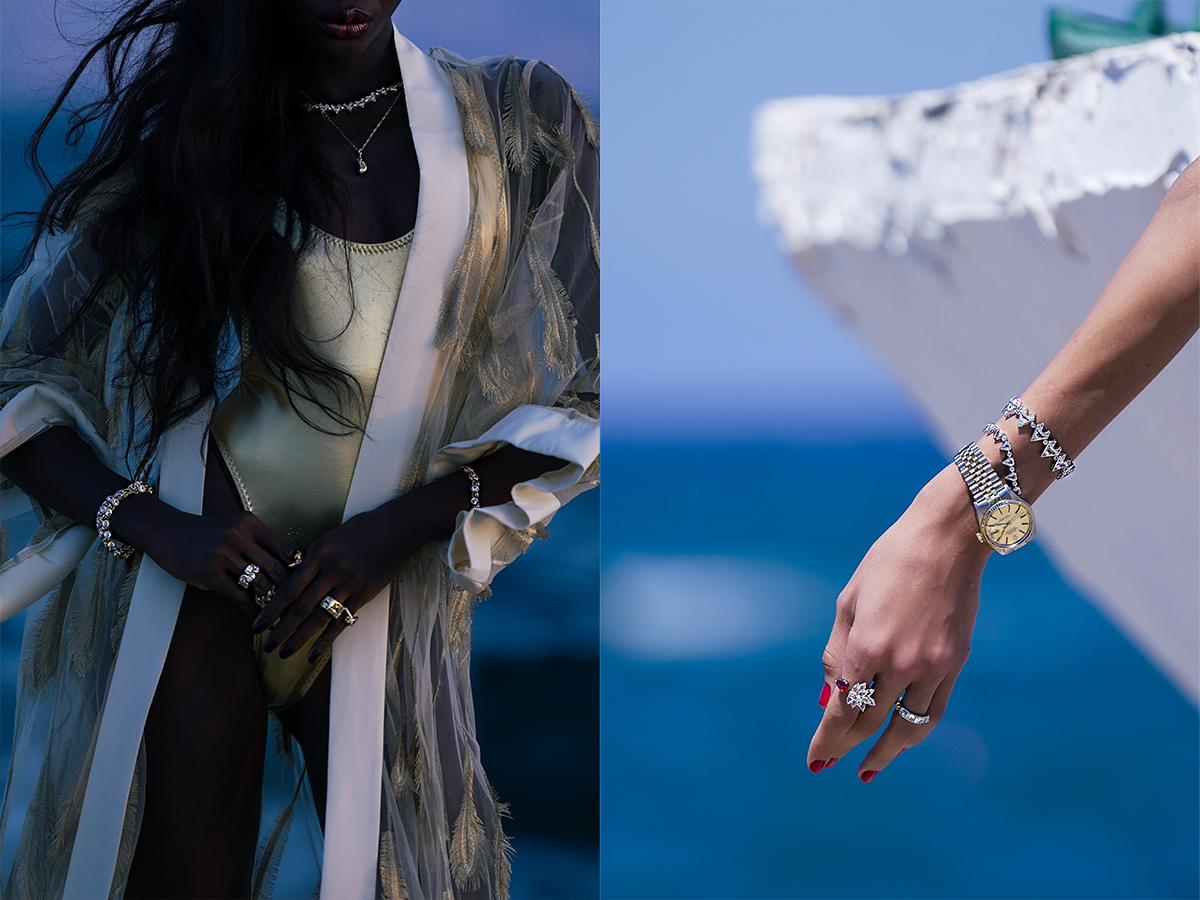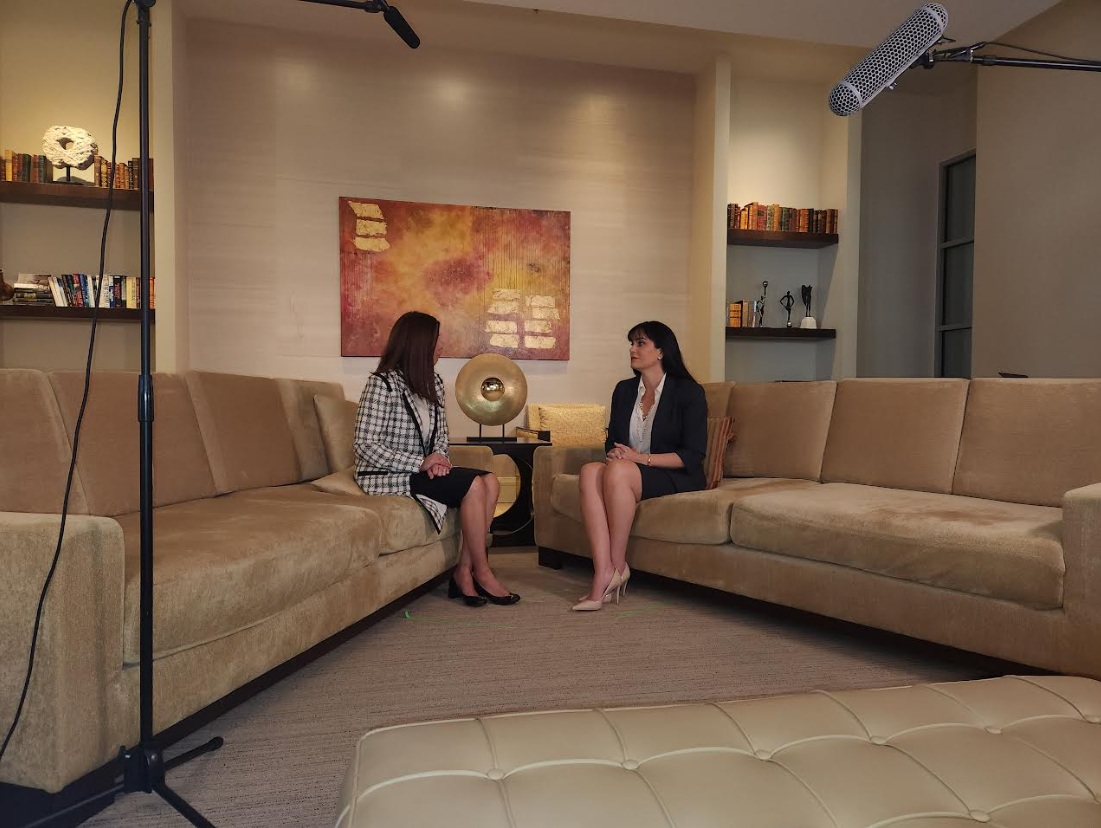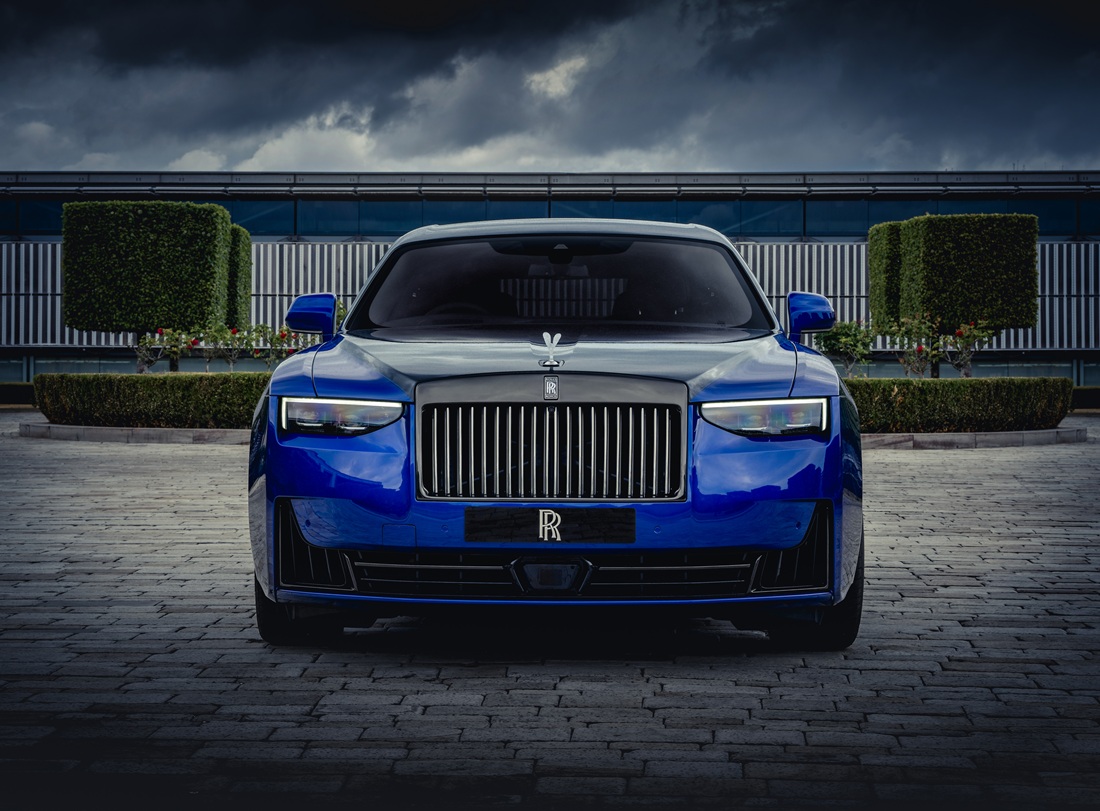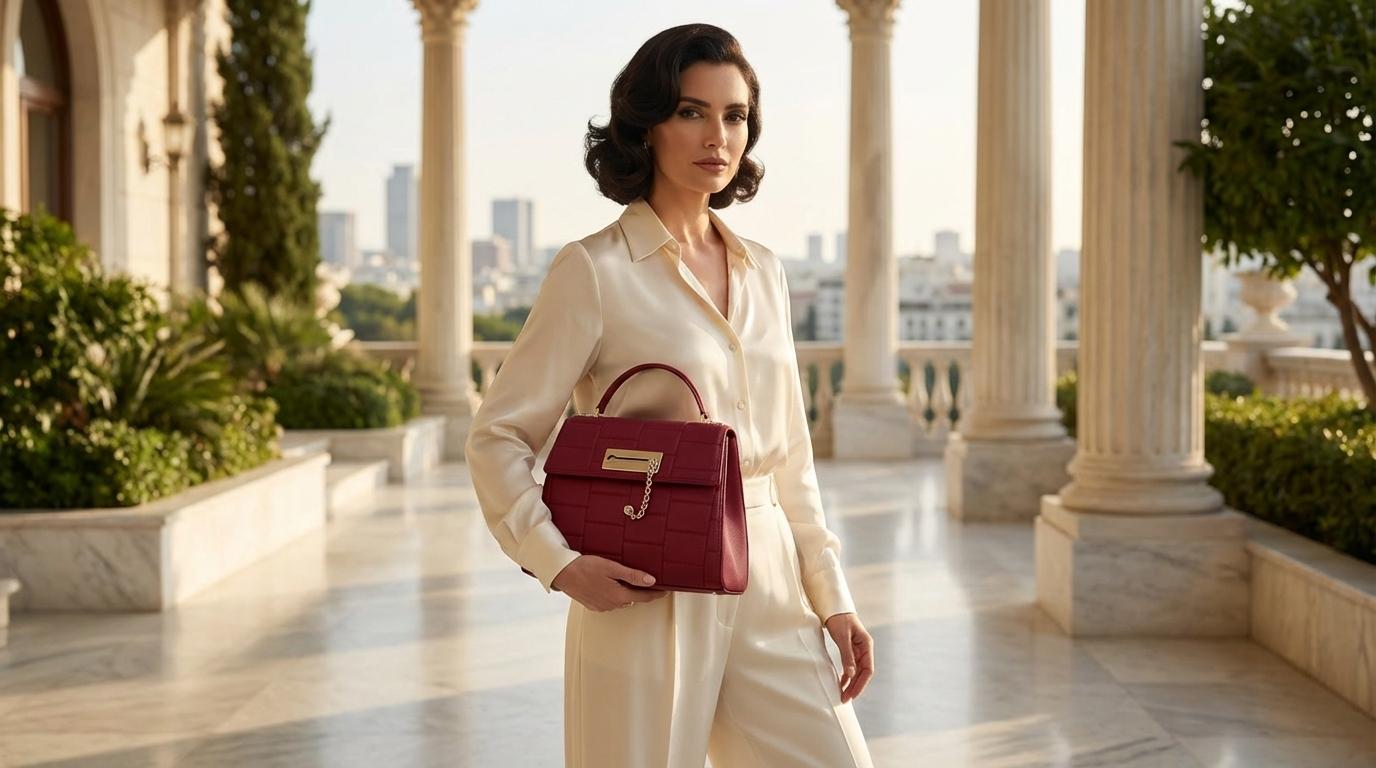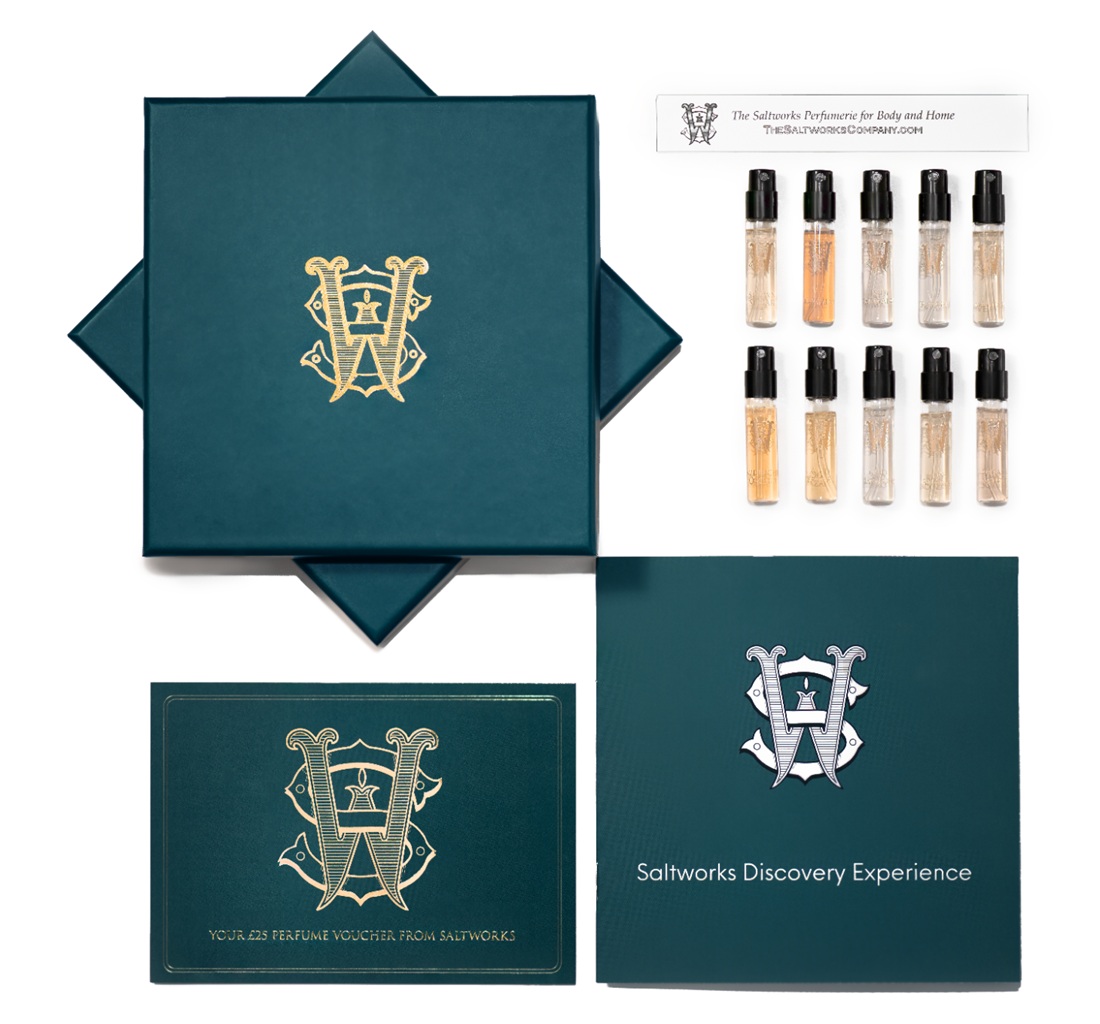Cecilia Rodhe Is Using Sculpture to Help Change The World
Sculptor Cecilia Rodhe says the ability of art to be used as a universal language has served as motivation throughout her lifelong journey. Rodhe’s work, which has been exhibited at top galleries in New York, Paris, Stockholm, and Geneva, focuses on what she describes as the dichotomy of strength and fragility that is at the very center of human existence and is also intrinsic to the nature of stone, her primary medium.
In 2010, Rodhe, a former model and Miss Universe finalist, cofounded the Noah’s Arc Foundation with her son, Joakim Noah, who plays center for the New York Knicks. The charity works internationally to help young men and women use art to become more aware and conscious of their ability to make a positive impact on themselves and their community. She created the “Expression from the Inside for Kids®” art program, which allows children to demonstrate how they feel by creating sculptures from clay. Under Rodhe’s guidance, NAF launched the #RockYourDrop movement to promote peace, unity, and positive change. The symbol of the movement is the Drop of ConsciousnessTM pendant, based on a sculpture of the same name created by Rodhe nearly two decades ago. It symbolizes the tears and strength of mothers who have lost children to gun violence, and those who wear it pledge to take a stand against such violence.

What motivated you to take up sculpture?
Cecilia Rodhe: I started working at a very young age, modeling when I was 14 and traveling the world. I married young and immediately had two children. I divorced three years later. Sculpting became my way to survive.
What do you feel sculpture can communicate that a painting can not?
CR: Because it is three-dimensional, sculpture is on more of a human scale [than painting]. Sculpting, releasing shapes out of stone, is the strongest confrontation I have ever had in my life. A lot of my work is really depicting what it means to be human. This is why I call my sculptures human messages.
What materials do you and most relevant to your sculpture?
CR: Stone. I also like clay because, unlike stone, it is very forgiving. It is an organic, submissive material that allows you the freedom to turn it upside down.
Do you design your pieces for the outdoors or indoors?
CR: If a piece’s structure and balance are good, it can be blown up or made small. For example, my original Drop of Consciousness is a large sculpture, but it’s been adapted as a wearable symbol for peace, unity, and positive change. These smaller drops are now being worn by thousands of people, demonstrating their commitment to peace and violence prevention.
What were the life experiences that have shaped your work?
CR: Becoming a mother has been my most profound life experience. I went through a very public divorce when I was young, experienced a lot of pain, and got very sick with double pneumonia. One day, as I was lying in my hospital bed, I saw my children walk by my window on their way to school. It was at that moment when I decided I would fight to get better, to be strong for them and strong for myself. Being that sick shakes you to the ground. But I rose up from the ashes and put time into healing. I allowed myself to learn from expressing what I truly felt.
How did your connection to the UN inform your work?
CR: The fundamental mission of the United Nations is to help understand one another and keep the peace, born out of so much pain and loss after the second World War. When I had a show at the UN, I saw that Dag Hammarskjold had created a Meditation Room that is a powerful, very spiritual, beautiful place to pray and show grace and thankfulness. In it, he had placed a six-and-a-half-ton rectangular block of iron ore, illuminated from above by a spotlight, a gift from the King of Sweden. The text that he wrote, which is distributed to visitors, says, “So, in the middle of the room, we see a symbol of how, daily, the light of the skies gives life to the earth….But the stone in the middle of the room has more to tell us….The material of the stone leads our thoughts to the necessity for choice between destruction and construction, between war and peace…. Of iron man has forged his swords, of iron he has also made his plough shares….” We have a very similar message at the Noah’s Arc Foundation, which the UN has designated with NGO status for our work helping youth through violence- prevention programs. When I created an installation called “The Promise,” with 15 hand-carved marble eggs of different sizes and colors from countries all over the world, three were exhibited at the President of the General Assembly’s office. The British Ambassador walked by and asked, “What are they hatching?” and I responded, “Hope.” That was a beautiful moment and speaks to our continuing connection to the UN. I also participate in UN exhibitions and conferences.

Your wrote that your work The Promise dealt with themes of reinvention. Was it a difficult transformation to go from a model, someone who is photographed, to working without that element of visibility as a sculptor?
CR: Sculpting saved my life. I worked from when I was very young and never had time to understand who I was becoming as a woman. It went too fast. The mission of the Noah’s Arc Foundation is to help children find themselves through self-expression, because it saved me. Being able to verbalize how I was changing, of not just being an image and a vision for others, was a way of finding who I was.
How does New York inspire you?
CR: I have always been fascinated by it. I came here from Sweden when I was 17 years old and had never seen a place like New York. It has been one of my best teachers. Here I learned how to be a survivor, not to be afraid, to trust myself, to move forward regardless, and never give up hope. You really can do anything in New York. My ultimate gift to my children was letting them have their own New York experience.
Which sculptors do you most admire?
CR: Auguste Rodin, Constantin Brâncuși, Jean Arp, and Barbara Hepworth—her work is also featured at the UN. I am constantly inspired by artists who are conceptual. This is very important to me and how I teach young people about inner expression and how there is no limit to what you can do, only doors to be opened. With art there are no restraints or borders, and you are free to learn how to convey your own vision about something. What we teach in our class is that you can sculpt what you feel, not only what you see. That’s very important.
What do you view as your greatest achievement in art?
CR: To become a stone cutter has not been an easy task. It is heavy and dangerous work. I am proud that I dared to do it.

Which pieces do you feel best represent what you set out to do as an artist?
CR: The Drop of Consciousness. I went into the deepest part of my being to find the concepts for it. The Drop became a symbol for peace. It blows my mind how people feel connected to the art that I’ve made, and it humbles me. There are now thousands of people around the world wearing this symbol. As an artist, that has been my proudest interaction with people.
Tell us about your news for 2017.
CR: We are developing a national campaign for violence prevention through the Drop of Consciousness movement, and there will be a film released this spring about our movement and the journey of the movement. In the summer, I will be participating in a major event on the South Side of Chicago with hundreds of young people who will show how they are inspired by the Drop in their own art and self-expression. In December, I will be presenting a few installations, including The Drop, at Art Basel in Miami, to bring awareness to the driving force and philosophy behind the Noah’s Arc Foundation and the Drop of Consciousness movement.

